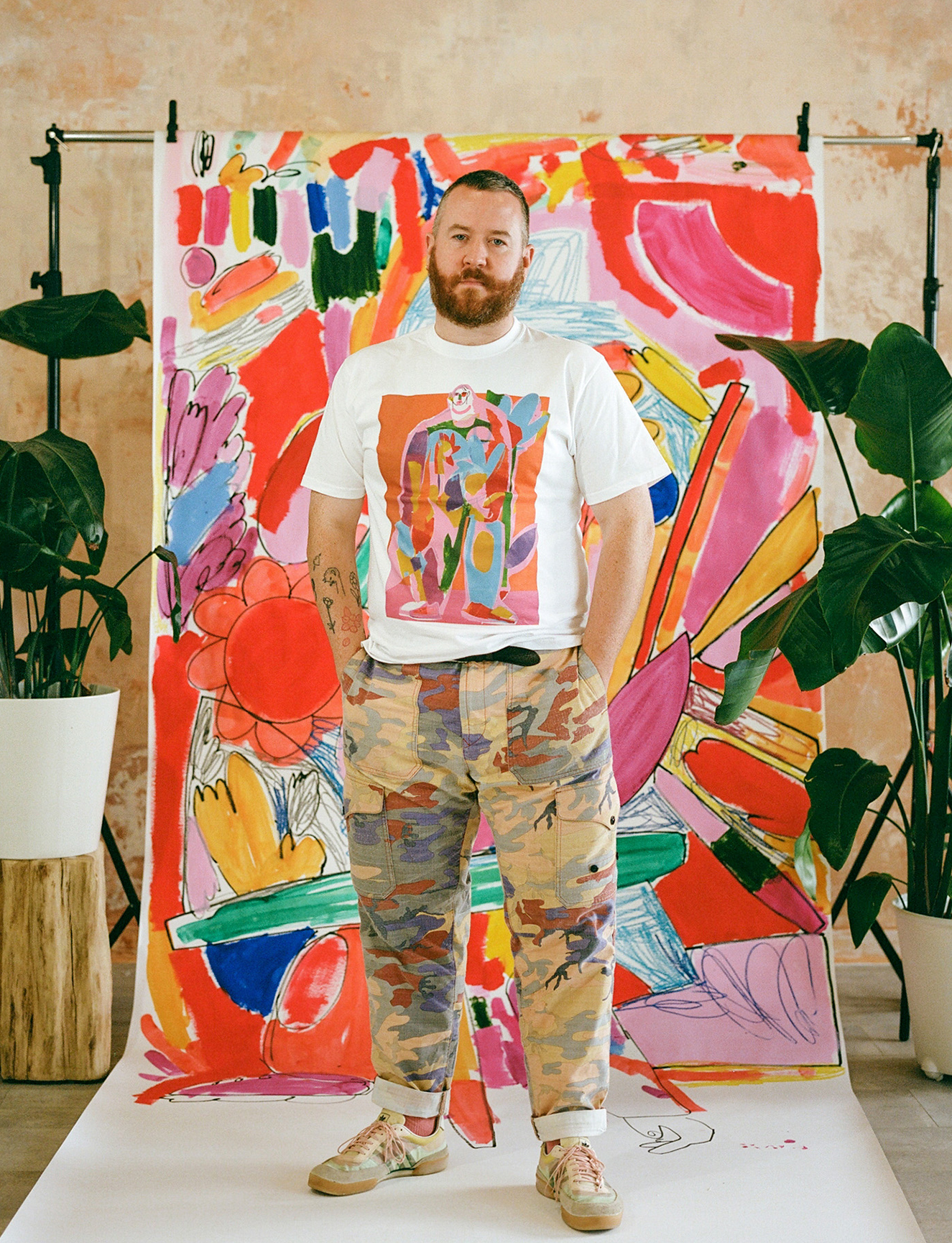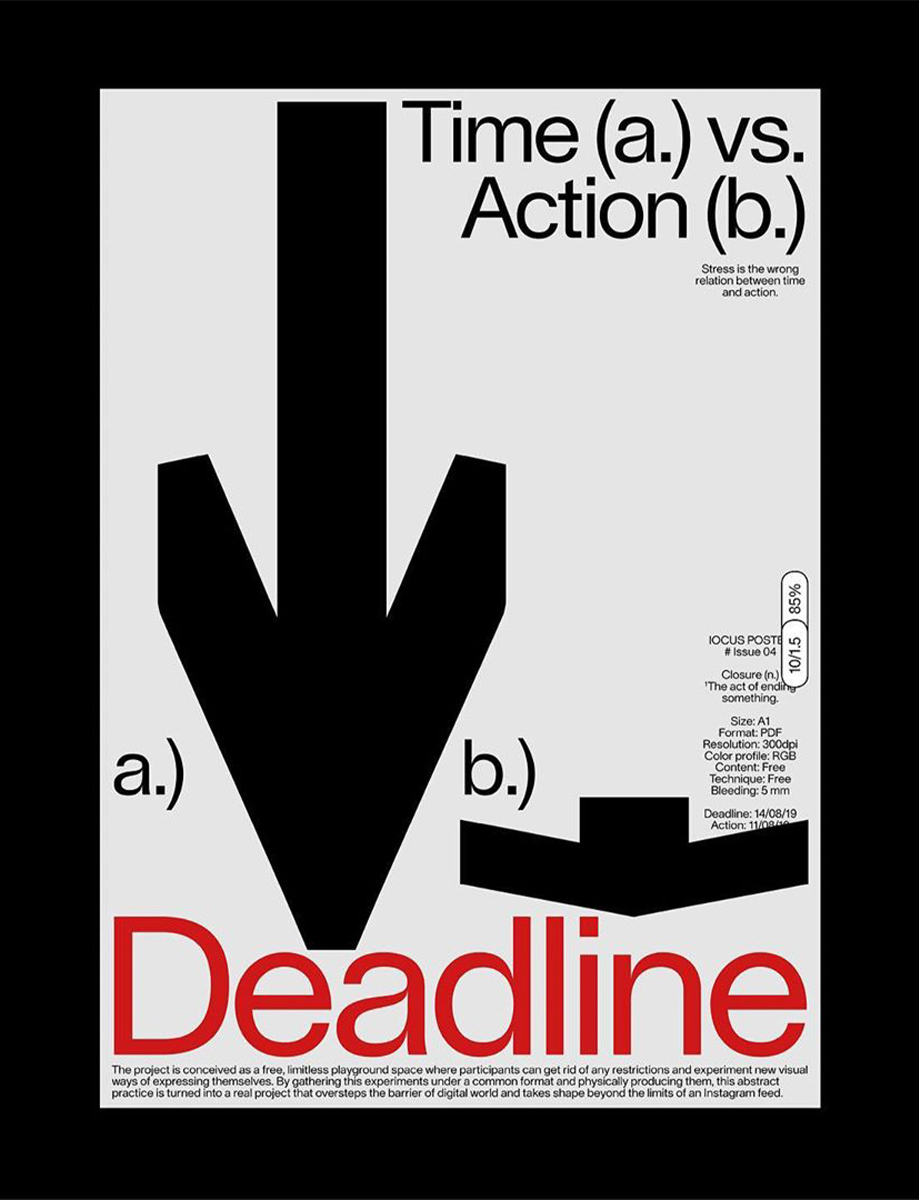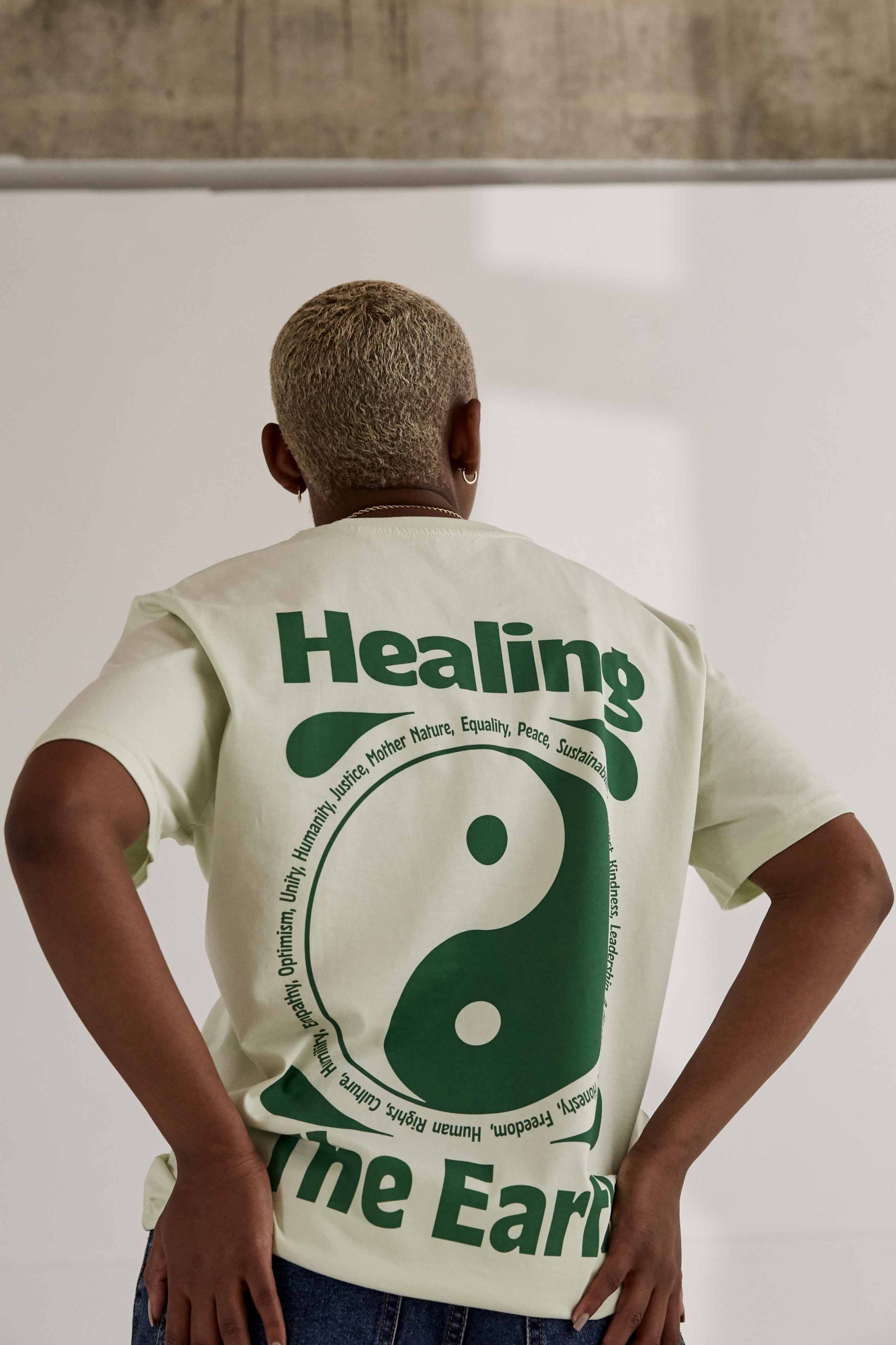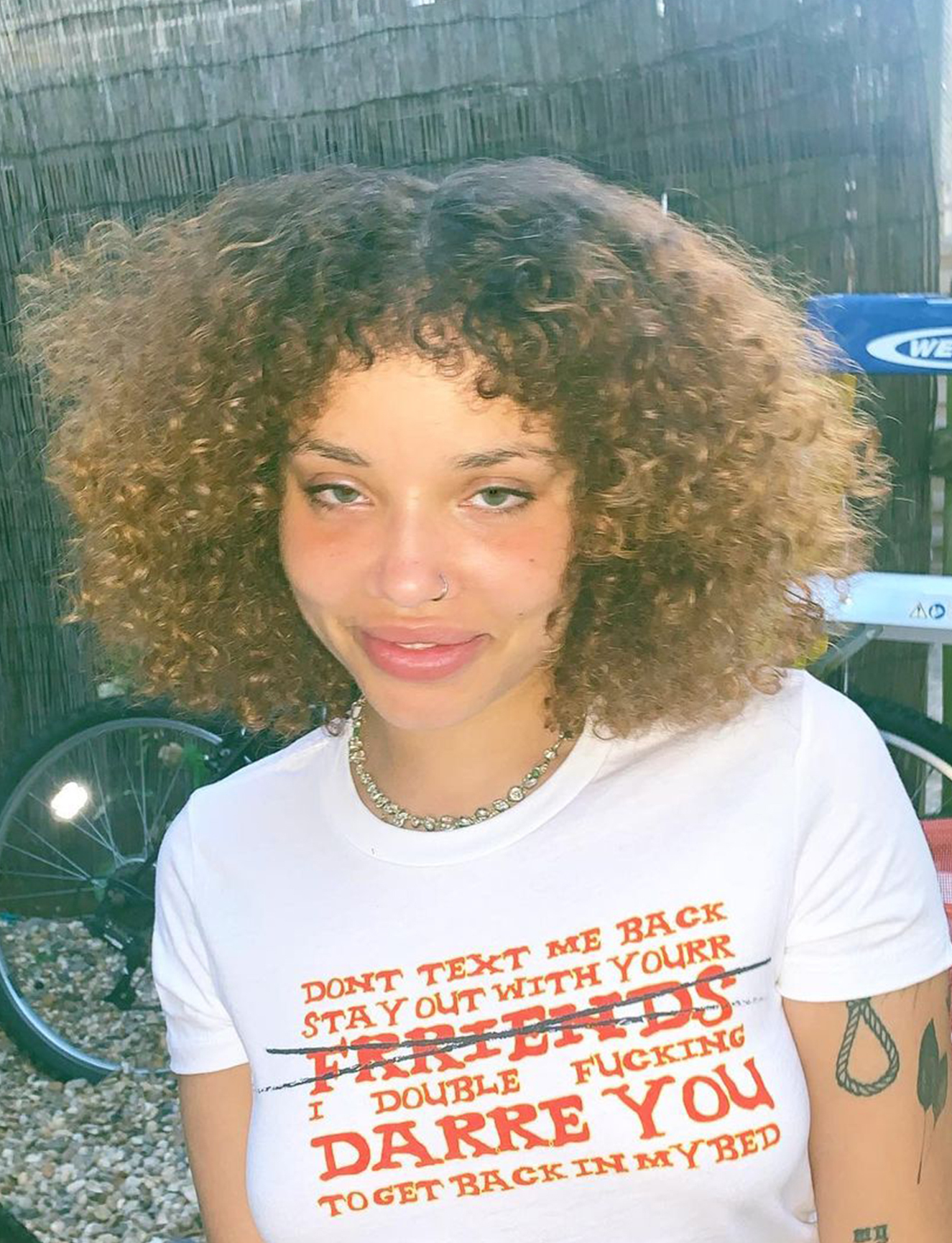You’re an artist, an illustrator, a ceramicist and a textile designer, so I wanted to start by talking about the interplay between these different parts of your practice.
In terms of the way I approach it, a lot of it is probably just wanting to keep my practice varied for my own personal stimulation. If you just did one thing all the time it could get quite boring. Originally I studied Fashion with Print at Central Saint Martins, so this T-shirt has been interesting in that it’s quite indicative of what I trained in; a print that goes on to a textile that is worn on the body. This project definitely has at its core one of my main passions, that I love design on print and fabric.
So you started in textiles, and then at what point did, say, ceramics come into that?
I did an evening course in ceramics about eight years ago and just really enjoyed it. It was around the boom in ceramics that happened about nine years ago, when a lot of independent studios started cropping up. I went to this ceramics course with some drawings I’d done which were an extension of my fashion drawings; I basically wanted to make a ceramic ‘head vase’. It was almost about this desire to turn the flat drawings into a 3D physical object, but I think that applies to lots of things that I do, because when I’ve designed, say, little accessories or bags, hats, sweaters, anything, it’s almost about taking something 2D into being 3D.
Everything starts with a drawing
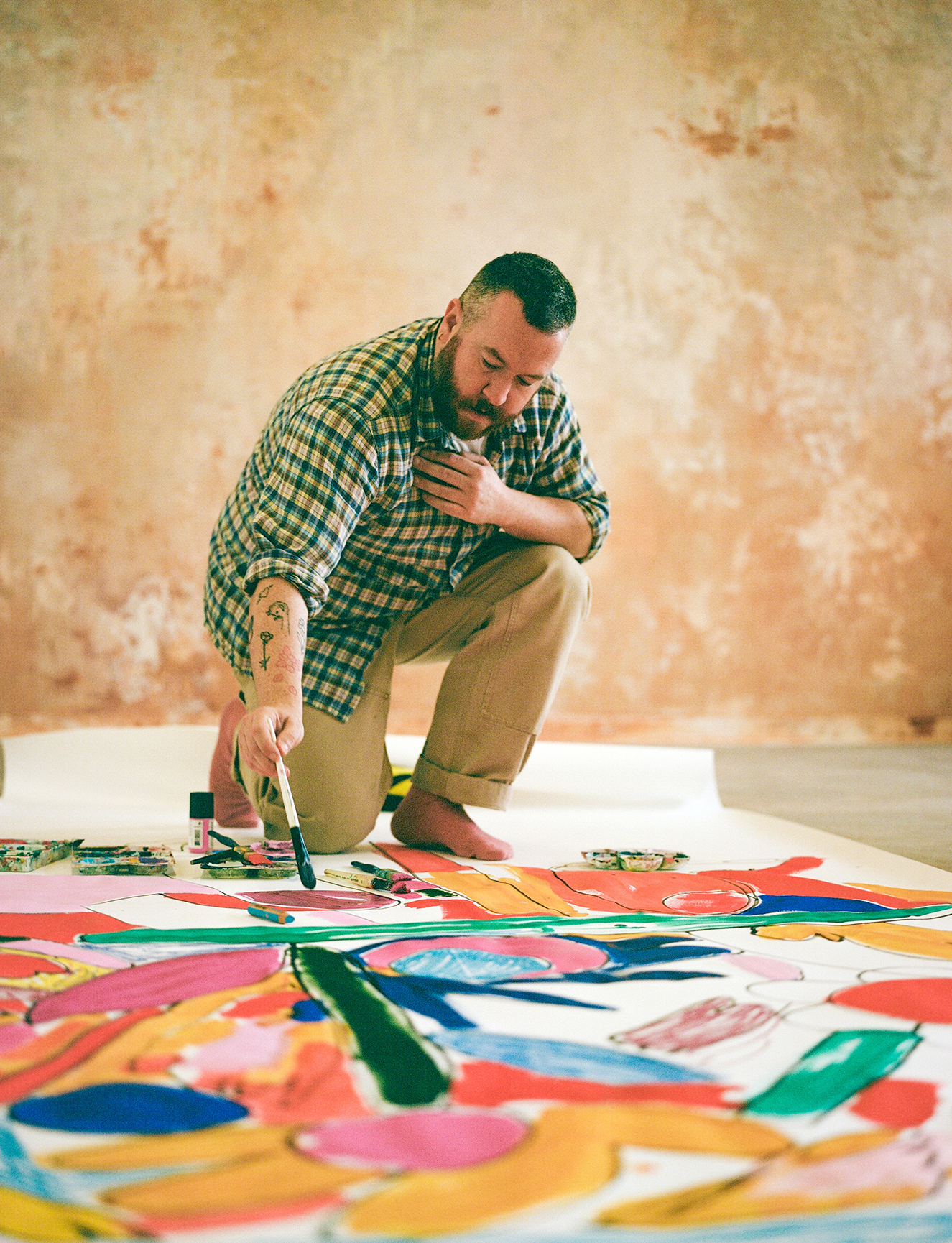
That’s really interesting, this interplay between 2D and 3D over any specific medium itself.
Everything starts with a drawing for me. Then it’s almost like you’re trying to imagine what it would be like to make that into a physical, 3D object. I find that really satisfying, when I get to sit down and do it. I’ve even had dreams before, where I’ll design a vase or an object, and in my head I’m going through the steps of how I’d make it into a 3D thing.
I’ve always loved drawing, the ease of it and the lack of parameters; you can draw anything, use any colour and get any effect. It doesn’t matter if it’s possible. Take clothing, you can draw up something that you know full well is never going to be made and probably couldn’t be made. But I love the fantasy of it.
Then I’m also into the pragmatic element of turning a drawing into a real thing. For example my own handmade ceramics can be quite chunky, sometimes they’re not perfect, but I want them to be feasible objects. If it’s a vase I have to make sure that it’s watertight, or that a plate is safe to eat off. I enjoy having some practical parameters within the work.
Yes, to have to think about functionality, not just the beauty or the aesthetic of a thing.
Totally. I’m really into that. I guess my head vases came from this idea. I used to have a motif that I drew quite a lot, of someone’s head with a flower coming out of it. Then I thought, “Okay, how could I turn that into a physical object?” Which evolved into making a clay head as the vase, where you can put real flowers in it. That’s become my staple product, if you want to call it that, or the thing that I love doing the most, and will probably end up doing for the rest of my life. In terms of repeating that, in general there’s quite a lot of repetition in my work, and I think about that a lot and I speak about it a lot with my studio mates. I think repetition is important.
I think that with artists, as an audience of the work, often you are drawn to the fact that someone’s work is recognisably theirs. That can tend to come through repetition, it makes the work cohere a bit.
It’s nice too because I’ve had that head vase on the go for quite a long time, probably about eight years. Every year or two years that go by you notice tweaks you can make or something that can be improved or developed in terms of finish. I think the ceramics I make now are quite a lot better compared to the ones I was making eight years ago, and that accumulation of skills is really satisfying.
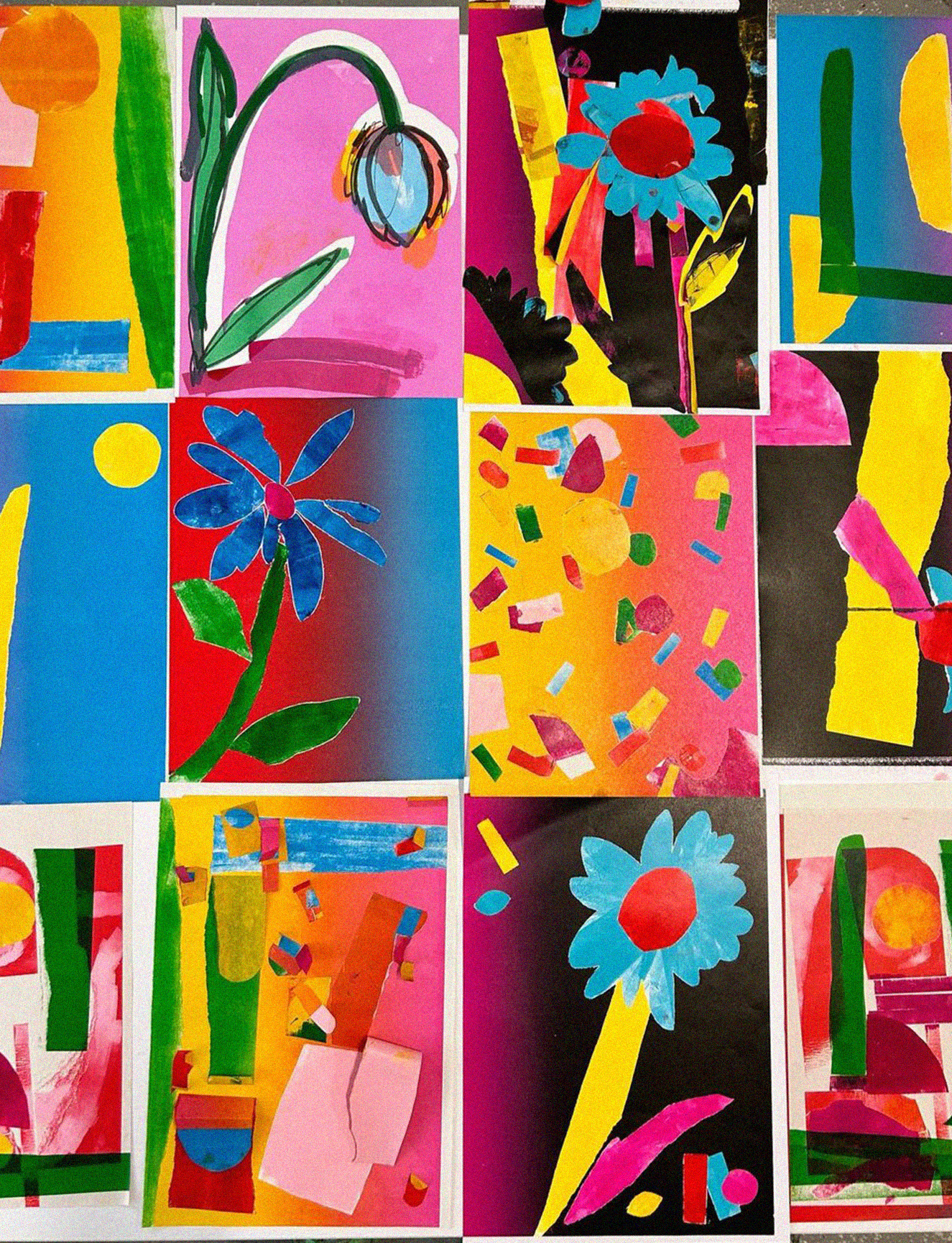
Repetition is important
I collaborate with one of my studio mates, Ian McIntyre, who is a formally trained industrial, or product, designer, and together we have a collective called Supergroup. We’ve both learned the opposite of how we usually work; Ian’s so, almost formal and uptight, and he’s learnt to approach it all a bit more loosely. Whereas, from him, I’ve learnt more formal skills, and to notice details more, to be more precise with the work in general.
What else do you think you’ve learned through collaborating?
It’s such an ongoing learning thing. I think that, ultimately, I like working with other people. I’ve definitely learned that about myself; that I’m not a particularly good solo worker. Even just sharing a studio, I really enjoy working in a shared environment. I also have to say I quite enjoy answering to a client, or answering to some sort of brief. Sometimes it’s intimidating if you sit down by yourself, I need parameters to work with.
It’s funny, that’s exactly what you said about the functionality, this need for parameters.
Definitely, I think I love parameters because otherwise it’s almost like, what is it? I’m not a fine artist, I’m more of an applied artist.
And perhaps you like switching through mediums because you’re learning what the limits of different trades are?
And it’s stimulating to keep learning, especially if you want to make a living from your art. It’s almost quite indulgent too in a way, because it’s saying, “Well, I just want to learn that because I want to do it.” At the minute, for instance, I’m doing an evening course in Japanese woodblock printing.
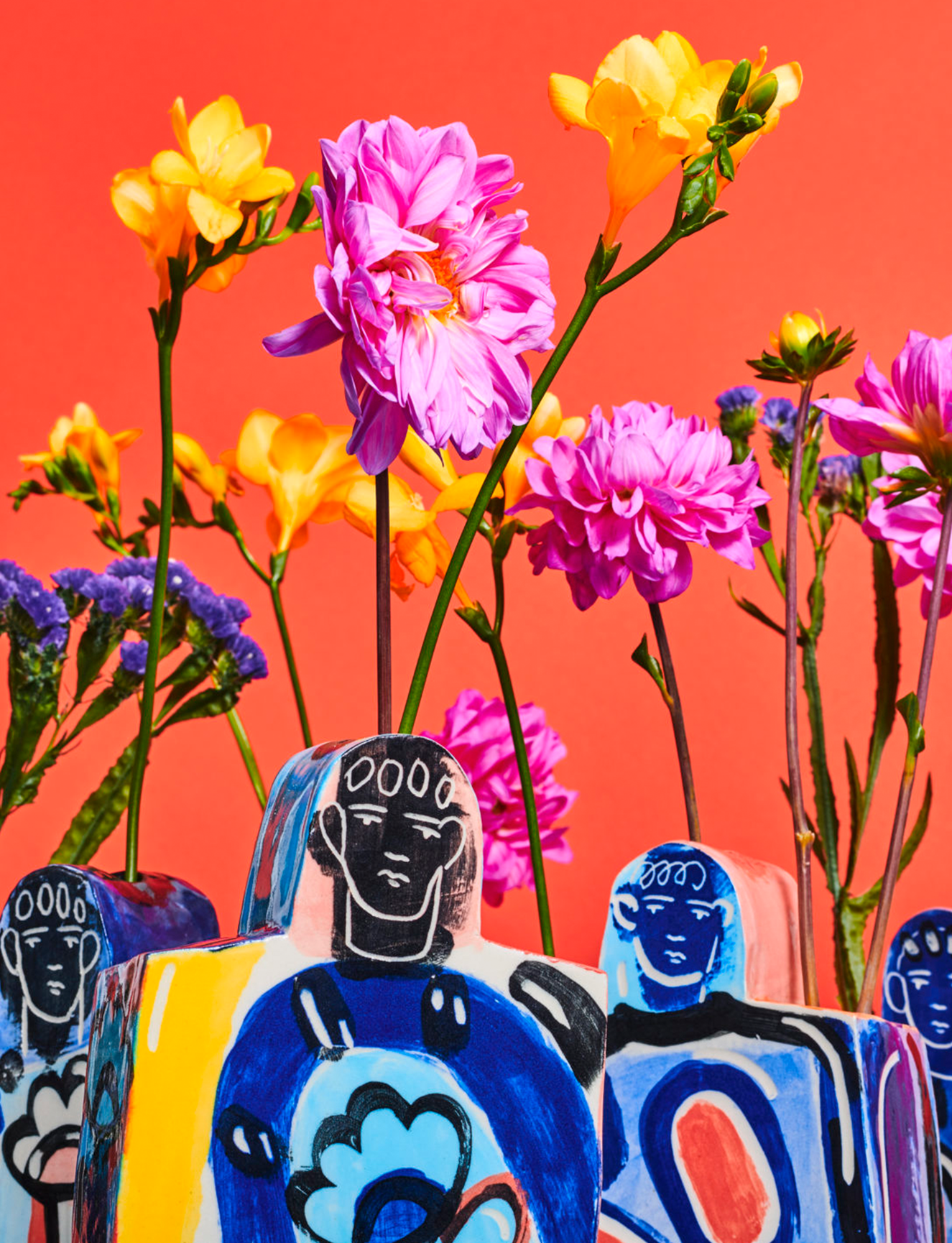
So different from ceramics!
It is, but there is an interesting connection to it, because it’s wet. So you cast the wood out, and you can carve anything you want, depending on how patient you are, and then you wet the wood, which I’m really into, and that almost feels like it’s bringing it back to being a watercolour. And clay is just such a wet medium anyway. There are always these links between processes across different mediums.
It’s stimulating to keep learning
One of the biggest themes that runs through your work is your celebration of colour, why do you think you’re so drawn to it?
It sounds cheesy, but ever since I was a child I’ve always really loved and been drawn to multicoloured things. I’ve got a twin sister, and when we were young there was no separation colour scheme, it wasn’t, “You’re a boy, you wear blue.” We were put in lots of non-gendered colours, yellow and green, really bright colours.
I also link colours with, it’s not just the static colour, but the way you apply the colour. When I was a kid I would have particular coloured pens or pencils that I really liked, but, for instance, the red would have to be a particular felt tip, the pink a particular pencil. I’ve always linked colours with the material they are applied from.
Do you think colour also helps give a 3D aspect to work? In the sense of adding depth?
Yes, definitely. But I think for me it’s more an emotional response. I get such an instant hit of joy if I get to start the day by painting colours onto paper or a ceramic piece or some wood, and I still paint a lot of furniture and wooden things. I even love painting walls or rooms, at the minute we’re painting the hallway bright green at my boyfriend’s flat, and it’s just so enjoyable to paint a vast area in one bright colour. It provokes quite a visceral response.
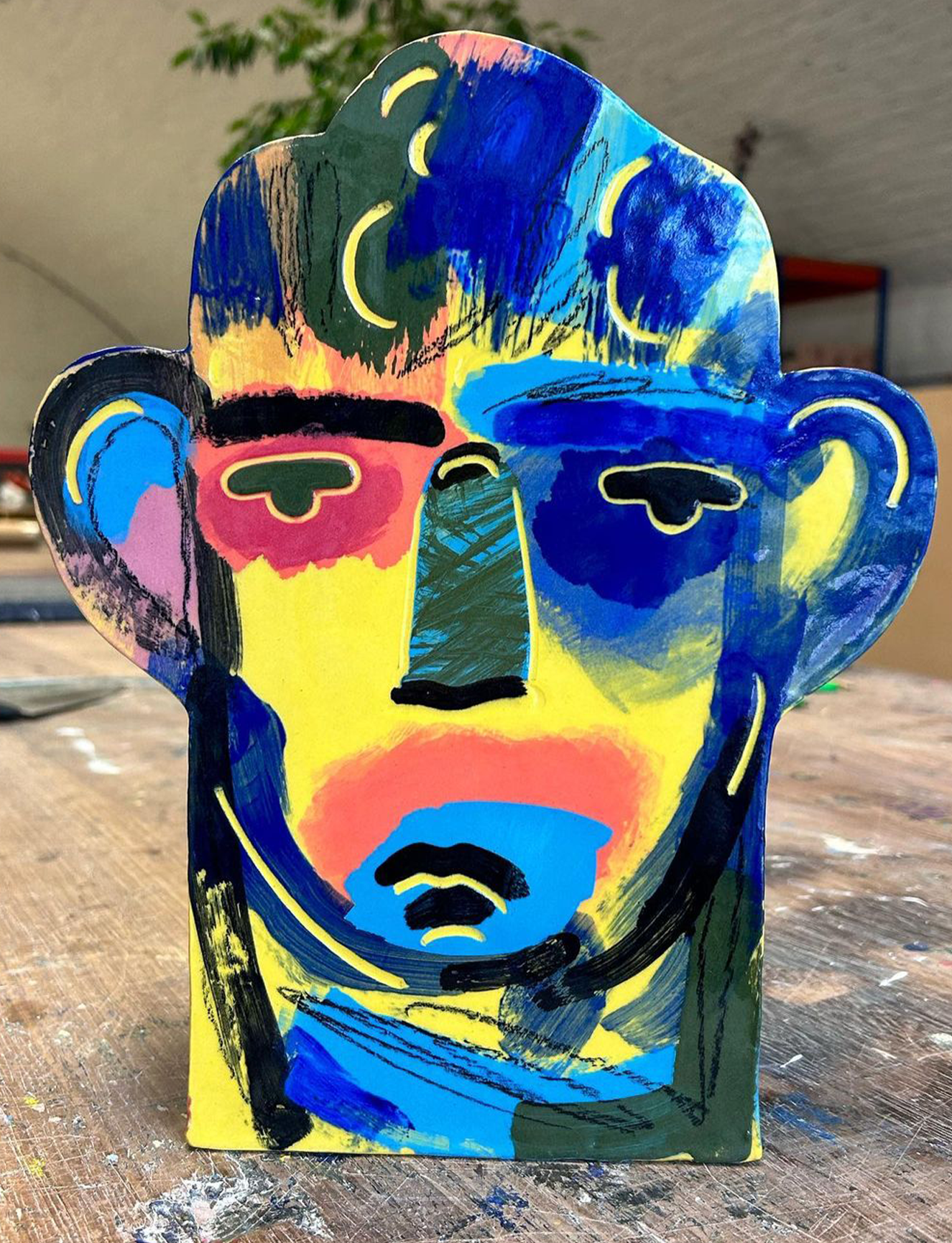
How do you know when a piece that you’re working on is finished?
I think my aesthetic lends itself to a tendency to really overwork something, or to keep adding to it, and so I really admire other people’s work if it’s more pared back or even teetering on minimal. I would say I probably know I’ve reached a saturation point when I think, “Okay, I can’t fit any more on this.” Now, I almost try to work backwards, where I’m trying to pare things back, and it doesn’t come naturally to me at all. As Supergroup we do these giant flowers, which I really love. Ian, who I work with, is always telling me to leave a bit of bare clay showing, and though I think it looks great when I do, it’s incredibly hard for me to remember to do this, because I enjoy decorating so much and my aesthetic is so maximal.
Why do you think it’s important to use your platform as an artist to advocate for the National AIDS Trust?
It was such a privilege to be approached by the National AIDS Trust to work on this, and I think there’s something really democratic about producing a T-shirt for it too. It’s on the cheaper end of the spectrum when it comes to clothing, and it’s a way of everyone being able to buy into this cause, and have a visual thing which also has a message. We also made the decision to not have any text on the T-shirt; I was up for exploring this, but I think there’s something powerful in the ambiguity of the visual. You might just appreciate it as an image, but if you know which organisation it’s from you can start to make our own connotations.
Read More: Nika Qutelia Doesn’t Follow Rules



